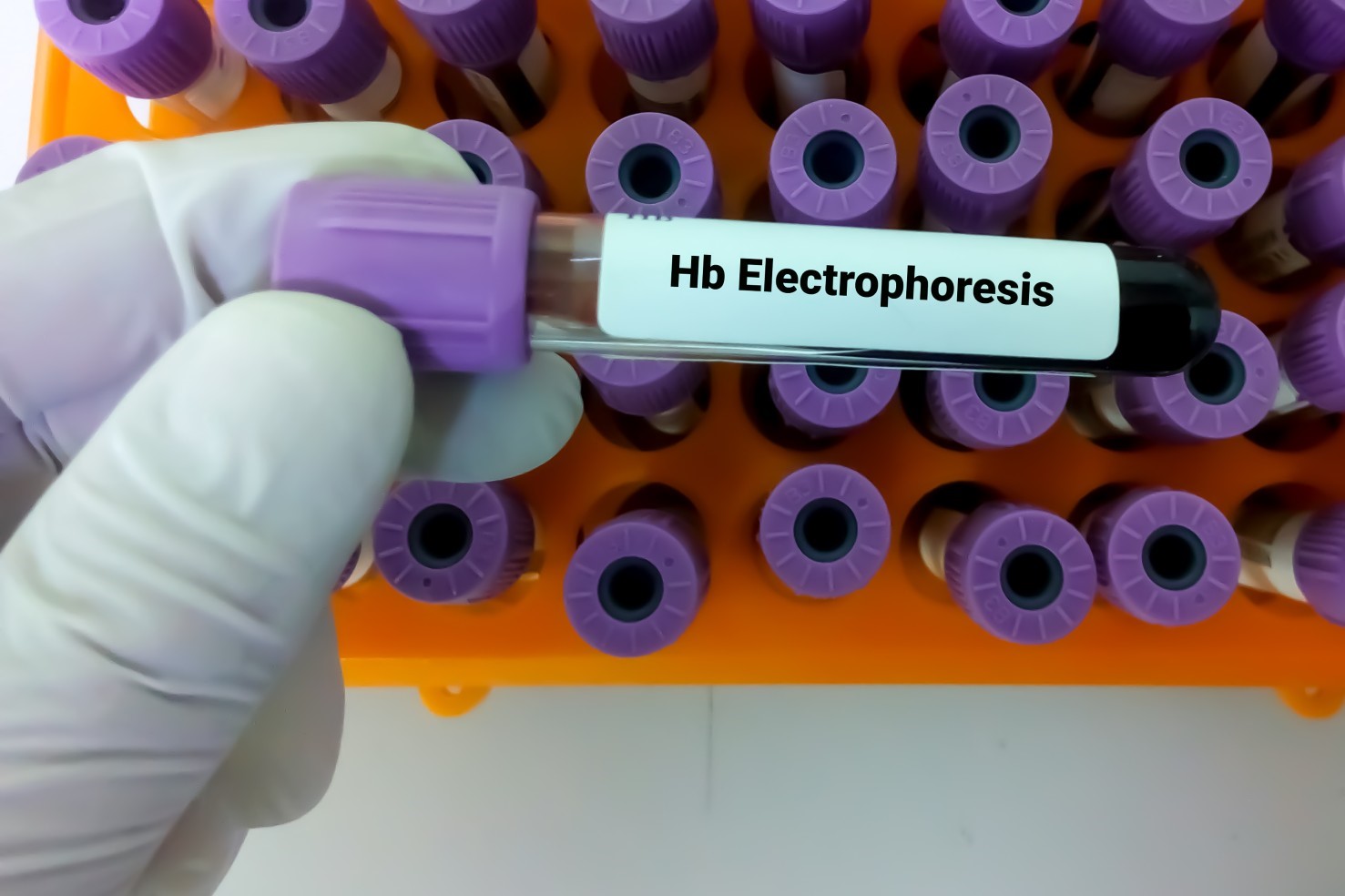
Haemoglobin electrophoresis, the essential test for diagnosing haemoglobinopathies such as thalassaemia and sickle cell anaemia or drepanocytosis
Haemoglobin electrophoresis is a test used to measure and identify the different types of haemoglobin present in the blood
Haemoglobin is a protein contained in red blood cells that has the function of transporting oxygen in the blood.
Haemoglobin electrophoresis examination is performed:
- In patients who have family members with haemoglobinopathies (genetic diseases affecting the structure or production of haemoglobin) such as thalassaemia or sickle cell anaemia;
- In patients who have a reduced red blood cell volume (RBC) but do not suffer from iron deficiency;
- In couples of childbearing age who intend to plan a pregnancy, regardless of the results of the CBC examination.
The examination consists of collecting a blood sample in a test tube containing a substance that keeps the blood fluid (anticoagulant).
Fasting is not essential but is recommended as the 1st level tests for haemoglobinopathies also include the determination of blood iron (sideremia) and ferritin, a protein required for iron storage.
Haemoglobin electrophoresis is a test that makes it possible to detect both those who are ‘carriers’ of haemoglobinopathy and those who are ill
- Haemoglobinopathy refers to an alteration in red blood cells, sometimes associated with anaemia, due to a genetic defect in one or more of the four chains that make up the haemoglobin (Hb) molecule.
- Genetic defects include defects in the production of the haemoglobin chains (thalassaemias) and structural defects, i.e. amino acid changes in the chain (haemoglobin variants such as HbS, HbC, HbE, etc.), both in the carrier state and in the patient.
Before the blood sample is taken, the child’s family and medical history is collected in order to direct the investigations and the drawing up of the report.
In particular, we ask about ethnicity, the reason for the test, whether there are any illnesses that may interfere with the test result (anaemia, recently ascertained iron deficiency, hyperthyroidism, renal insufficiency, etc.), whether the child is taking any therapies that may interfere with the test result (chemotherapy, antiretroviral therapies, treatment with drugs that stimulate red blood cell production, blood transfusions).
The reports show the haemoglobins present and their relative amount.
For adults, the reference percentages of normal haemoglobins are:
- Haemoglobin A (HbA): 95-98%;
- Haemoglobin A2 (HbA2): 2-3%;
- Haemoglobin F (HbF): less than 2%.
The assessment of haemoglobin and the subsequent formulation of a report cannot be separated from the evaluation of certain red blood cell values and the concentration of iron and ferritin.
For this reason, a haemoglobin electrophoresis must be performed together with a haemochrome and iron and/or ferritin dosage.
An increased haemoglobin A2 value associated with low MCV and MCH values with normal sideremia and ferritin values should raise suspicion of beta thalassaemia carrier status.
But an excessively low haemoglobin A2 value associated with low MCV and low MCH with normal sideremia and ferritin values must also raise suspicion of a haemoglobin variant.
In addition, a high haemoglobin F (HbF) value in patients two years of age and older must suggest the possible diagnosis of beta-thalassaemia or persistent haemoglobin F (HbF).
This test can also identify and quantify the presence of haemoglobin chain variants such as haemoglobin S (HbS), responsible for sickle cell anaemia, haemoglobin C (HbC) and haemoglobin E (HbE).
The report must be assessed by a haematology specialist and if a haemoglobin defect is found, the patient and family should be referred for a Level II diagnostic investigation in order to identify the gene mutation responsible for the haemoglobinopathy.
Read Also:
Emergency Live Even More…Live: Download The New Free App Of Your Newspaper For IOS And Android
What Is Albumin And Why Is The Test Performed To Quantify Blood Albumin Values?
What Is Cholesterol And Why Is It Tested To Quantify The Level Of (Total) Cholesterol In The Blood?
Gestational Diabetes, What It Is And How To Deal With It
What Is Amylase And Why Is The Test Performed To Measure The Amount Of Amylase In The Blood?
Adverse Drug Reactions: What They Are And How To Manage Adverse Effects
Albumin Replacement In Patients With Severe Sepsis Or Septic Shock
Provocation Tests In Medicine: What Are They, What Are They For, How Do They Take Place?
What Are Cold Agglutinins And Why Is The Test Performed To Quantify Their Values In The Blood?


